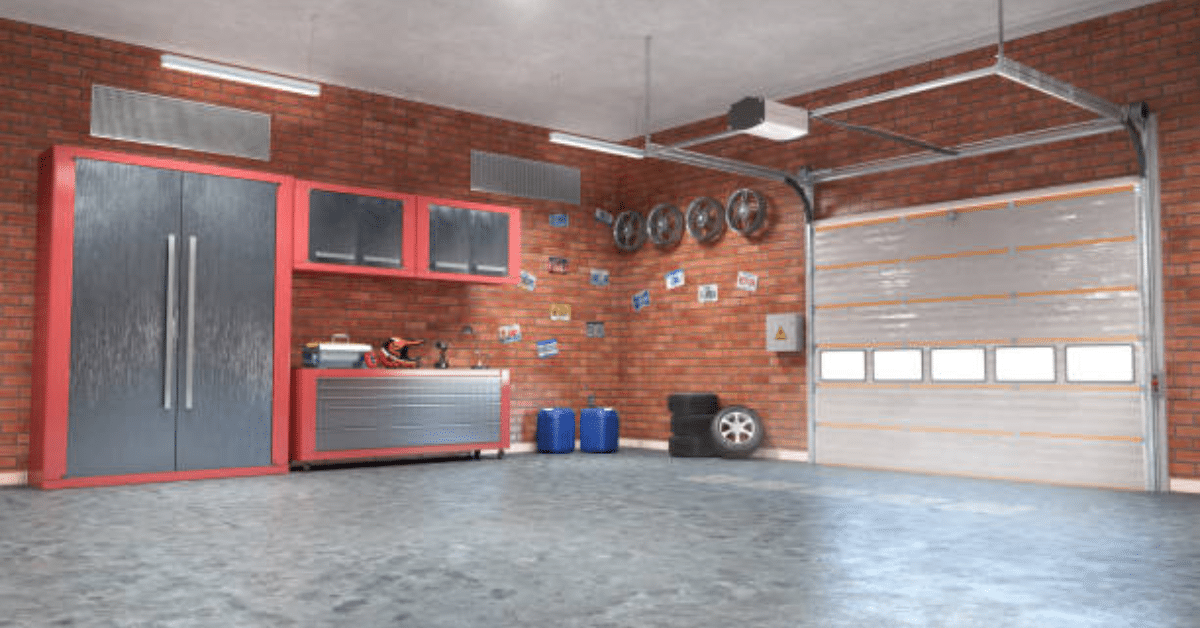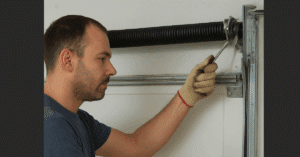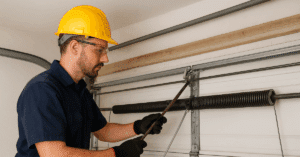When you press the remote or wall switch, your garage door opens or closes effortlessly — but behind this convenience lies a powerful motorized system. Understanding how does a garage door motor work not only helps you appreciate the technology but also ensures you can maintain it properly and detect problems early.
This detailed guide explains the components, operation process, types of motors, and maintenance tips, so you know exactly how your garage door motor powers safe and smooth operation.
Understanding the Basics of a Garage Door Motor
A garage door motor is the core component of your automatic garage door opener system. It converts electrical energy into mechanical motion, allowing the door to open and close without manual effort.
In simple terms, when you send a signal via your remote or wall control, the motor activates, driving the mechanism that moves the garage door along its track.
Key Components of a Garage Door Motor System
Before we dive into how does a garage door motor work, let’s explore the main parts that make it possible:
- Electric Motor – The powerhouse that drives the door’s movement.
- Drive Mechanism – Chain, belt, or screw drive that transfers power from the motor to the door.
- Trolley – Connects the drive system to the door’s arm, moving it up or down.
- Limit Switches – Stop the door at the correct open and closed positions.
- Safety Sensors – Detect obstructions and prevent accidents.
- Remote Receiver – Picks up the signal from your remote control.
These components work together to ensure your garage door operates efficiently and safely.
How Does a Garage Door Motor Work? Step-by-Step
1. Signal Activation
The process begins when you press the button on your remote or wall-mounted control. The receiver in the motor housing detects this signal and activates the electric motor.
2. Motor Starts Turning
The motor’s rotational force is transferred to the drive mechanism — chain, belt, or screw — which begins to move the trolley connected to the door.
3. Door Movement
- When opening, the trolley pulls the door upward along the tracks.
- When closing, the motor reverses direction, guiding the door down smoothly.
4. Safety Checks
During operation, the motor system constantly monitors for obstructions through the safety sensors. If something blocks the path, it stops or reverses the door to prevent accidents.
5. Stopping at the Right Position
Limit switches ensure the motor stops exactly when the door is fully open or closed, preventing strain on the motor and tracks.
Types of Garage Door Motors
Understanding the types helps you choose the right one for your needs:
Chain Drive Motor: Uses a metal chain to move the door. Durable and affordable but can be noisy.
Belt Drive Motor: Employs a rubber belt for quieter operation — ideal for attached garages.
Screw Drive Motor: Uses a threaded steel rod. Fewer moving parts mean less maintenance, but performance can be affected by temperature changes.
Direct Drive Motor: Motor itself moves along the track, offering quiet and smooth operation.
How Does a Garage Door Motor Work Differently in Each Type?
Chain Drive: The motor rotates a sprocket connected to the chain, moving the trolley.
Belt Drive: Similar to chain drive, but the belt absorbs vibration for quieter operation.
Screw Drive: Motor turns the screw, moving the trolley directly without belts or chains.
Direct Drive: The entire motor glides along the track, pulling or pushing the door directly.
Advantages of Understanding How a Garage Door Motor Works
- Better Maintenance – You’ll know which parts to lubricate or inspect.
- Troubleshooting – Identifying whether an issue is motor-related or due to other components.
- Upgrading Wisely – Choose a motor type that suits your needs and environment.
Common Problems with Garage Door Motors
Even when you know how does a garage door motor work, issues can arise:
- Motor runs but door doesn’t move (broken drive mechanism)
- Door reverses before fully closing (sensor alignment issue)
- Motor hums but won’t start (capacitor or motor failure)
- No response to remote control (signal interference or dead batteries)
Maintenance Tips for a Garage Door Motor
Regular Lubrication: Lubricate moving parts like chains, screws, and hinges every 3–6 months.
Sensor Cleaning: Dust or dirt on sensors can cause false stops — clean them regularly.
Tightening Hardware: Loose bolts or tracks can cause strain on the motor.
Testing Safety Features: Check the auto-reverse function monthly to ensure it’s working.
How Long Does a Garage Door Motor Last?
On average, a garage door motor lasts 10–15 years with proper care. Usage frequency, climate, and maintenance habits all influence lifespan.
When to Replace a Garage Door Motor
- Excessive noise during operation
- Frequent repairs or breakdowns
- Outdated technology without modern safety features
- Sluggish opening or closing despite proper lubrication
Energy Efficiency and Modern Garage Door Motors
Newer garage door motors are designed with energy-saving standby modes and DC motors for quieter, more efficient performance. Smart technology also allows you to control your garage door from your phone.
Safety Precautions When Working on a Garage Door Motor
- Always disconnect power before maintenance
- Avoid adjusting torsion springs yourself — they are under high tension
- Call a professional for major repairs or replacements
Final Thoughts
Understanding how does a garage door motor work gives you valuable insight into one of the most important parts of your garage system. From signal activation to the final stop, the motor powers smooth and safe door movement through a combination of electrical and mechanical components.
By learning about motor types, common issues, and maintenance practices, you can ensure your garage door operates efficiently for years. Whether you’re troubleshooting a problem or planning an upgrade, this knowledge will help you make smarter decisions and keep your garage door in top condition.





